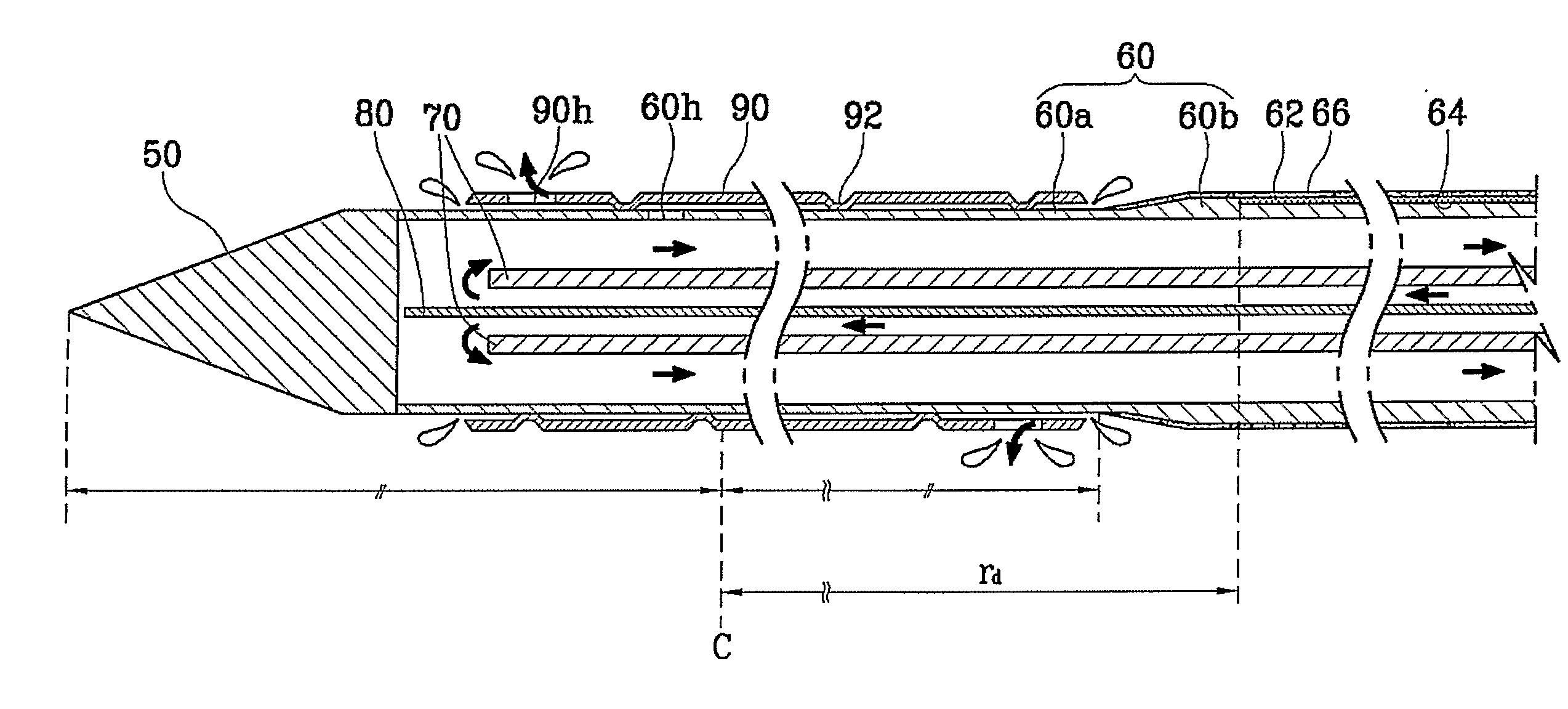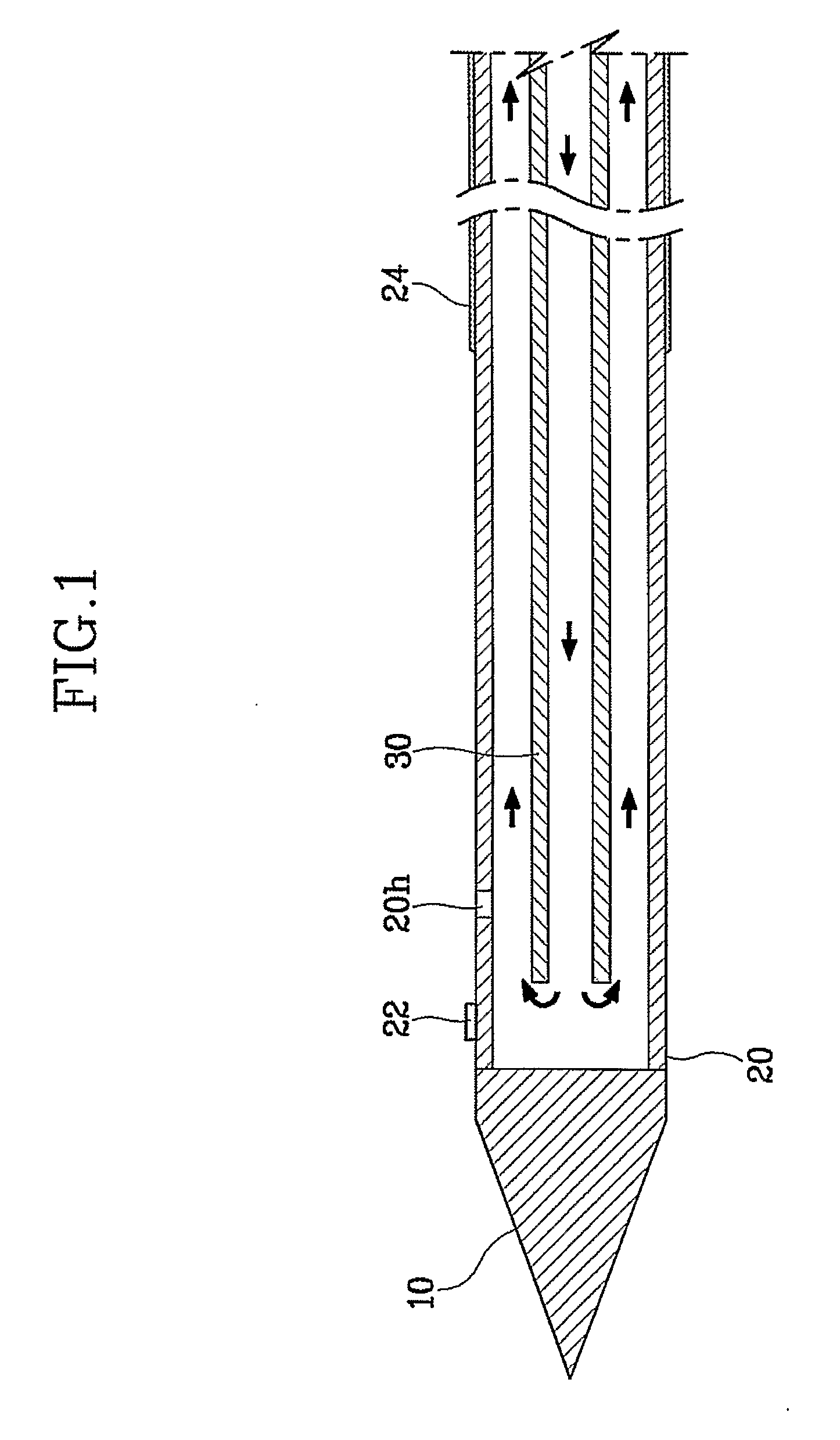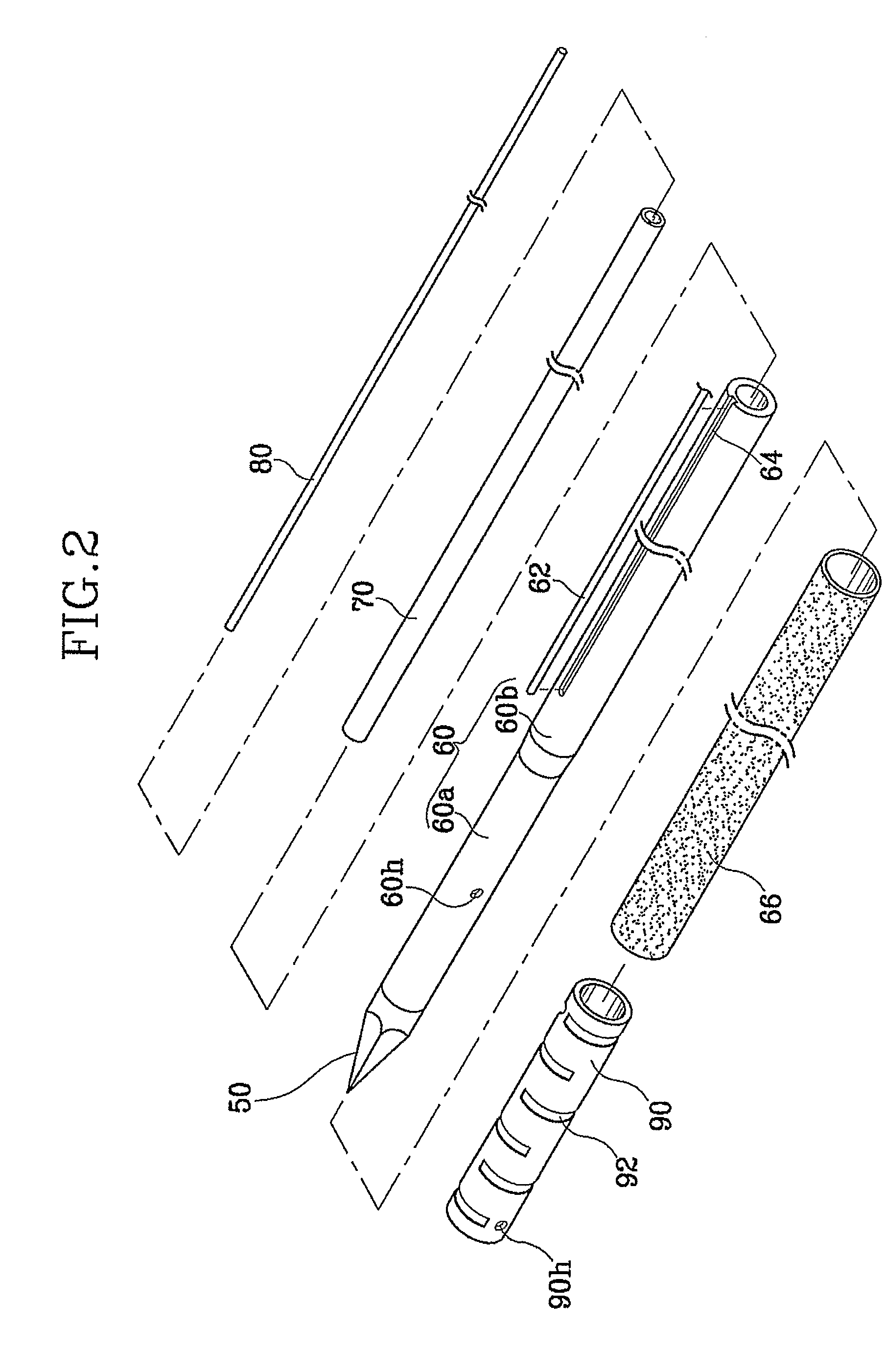Electrode for Radiofrequency Tissue Ablation
a radiofrequency tissue and electrode technology, applied in the field of electrodes for radiofrequency tissue ablation, can solve the problems of excessive coagulation and carbonization of tissue and blood, difficult coagulation, and only a target part is necrotized,
- Summary
- Abstract
- Description
- Claims
- Application Information
AI Technical Summary
Benefits of technology
Problems solved by technology
Method used
Image
Examples
first embodiment
[0024]FIGS. 2 and 3 are a disassembly perspective view and a side-sectional view illustrating an electrode for radiofrequency tissue ablation in accordance with the present invention.
[0025]In accordance with the first embodiment of the present invention, referring to FIGS. 2 and 3, a hollow tube type electrode 60 formed long in the length direction and made of a material in which an output (radiofrequency electric energy) flows is connected to a closed end 50 having a sharp end. The hollow electrode 60 is more thickened than the general one. A mounting groove 64 is formed long in the length direction on the outer circumference of the hollow electrode 60 with a predetermined gap from the closed end 50, so that a temperature sensor 62 can be mounted thereon. In a state where the temperature sensor 62 is mounted on the mounting groove 64, an insulation member 66 is covered on the outer circumference of the hollow electrode 60 except for the part connected to the closed end 50.
[0026]The...
second embodiment
[0051]FIGS. 4 and 5 are a disassembly perspective view and a side-sectional view illustrating an electrode for radiofrequency tissue ablation in accordance with the present invention.
[0052]The second embodiment of the present invention is almost identical to the first embodiment described above. As illustrated in FIGS. 4 and 5, the hollow electrode 60 includes two hollow tubes, namely, an inner tube 61a and an outer tube 61b. The closed end 50 is coupled to the end of the inner tube 61a, and the outer tube 61b is installed with a predetermined gap from the closed end 50. The temperature sensor 62 and the electric wire are installed on a mounting hole 65 formed on the outer tube 61b to be connected to the control unit. The insulation member 66 is covered on the whole outer circumference of the outer tube 61b.
[0053]Here, the inner tube 61a is a hollow tube having a smaller thickness than the general electrode. The closed end 50 is coupled to the end of the inner tube 61a by soldering...
third embodiment
[0068]FIGS. 6 and 7 are a disassembly perspective view and a side-sectional view illustrating an electrode for radiofrequency tissue ablation in accordance with the present invention.
[0069]The third embodiment of the present invention is almost identical to the second embodiment described above. As shown in FIGS. 6 and 7, the closed end 50 is coupled to the end of the inner tube 61a, and the outer tube 61b on which the mounting hole 65 is formed is installed to cover the outer circumference of the inner tube 61a with a pre-determined gap from the closed end 50. The temperature sensor 62 and the electric wire are installed on the mounting hole 65 formed on the outer tube 61b to be connected to the control unit. The insulation member 66 is covered on the whole outer circumference of the outer tube 61b. The part of the inner tube 61a which is not covered with the insulation member 66 generates radiofrequency electric energy, thereby coagulating and necrotizing the peripheral tissue. Th...
PUM
 Login to View More
Login to View More Abstract
Description
Claims
Application Information
 Login to View More
Login to View More - R&D
- Intellectual Property
- Life Sciences
- Materials
- Tech Scout
- Unparalleled Data Quality
- Higher Quality Content
- 60% Fewer Hallucinations
Browse by: Latest US Patents, China's latest patents, Technical Efficacy Thesaurus, Application Domain, Technology Topic, Popular Technical Reports.
© 2025 PatSnap. All rights reserved.Legal|Privacy policy|Modern Slavery Act Transparency Statement|Sitemap|About US| Contact US: help@patsnap.com



